Top speed 177 km/h Length 6.35 m Unit cost 38,500–38,500 USD Manufacturer Eagle R&D | Range 257 km Wingspan 6.05 m Engine type Solar T62 | |
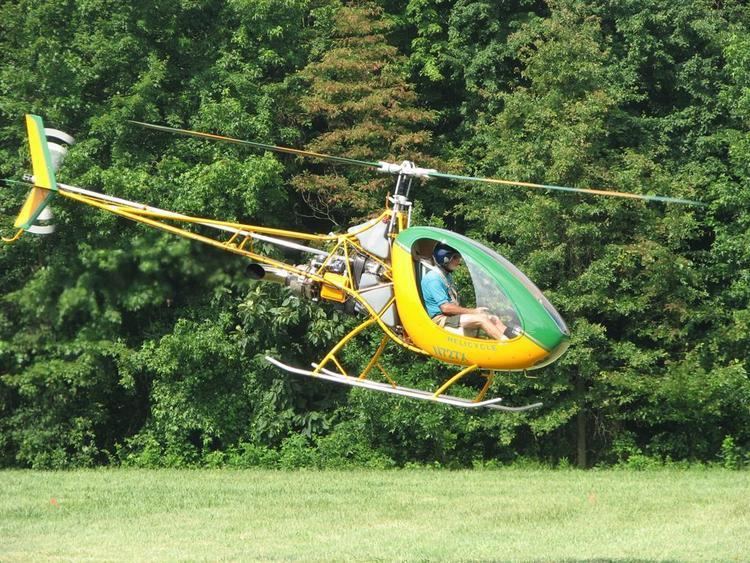 | ||
The Helicycle is a single-seat, single, semi-rigid main rotor helicopter powered by a turboshaft engine. Manufactured by Eagle R&D in Nampa, Idaho as a kit, the aircraft is intended to be assembled by the owner and is considered a homebuilt aircraft. The Helicycle was conceived and designed by B.J. Schramm, the founder of RotorWay International.
Contents
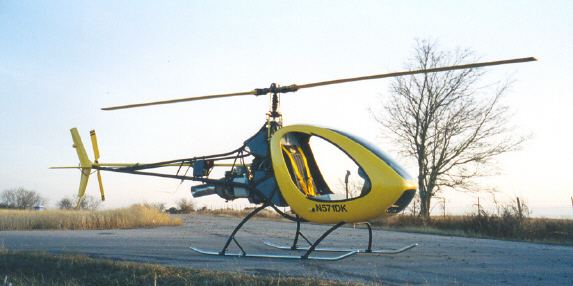
Development
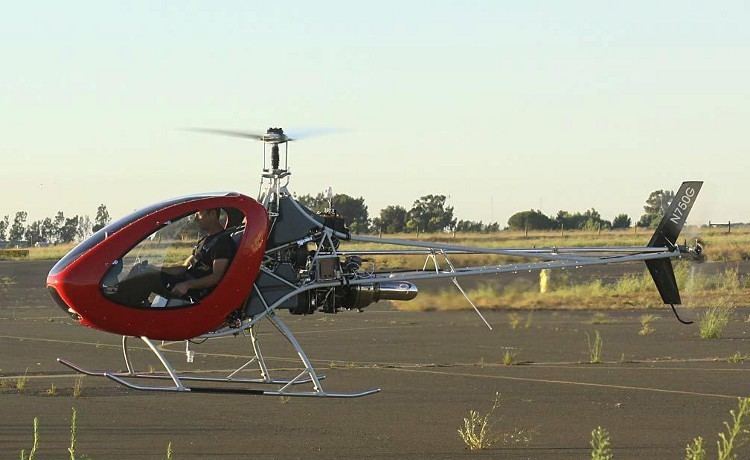
Schramm's concept for the Helicycle was to provide a kit for building a reliable, high-performance, real helicopter for a reasonable cost to individuals (on the order of a mid-priced SUV). Fabrication and assembly skills only require being able to accurately drill holes, bend sheet metal and tubing, install fasteners, run wiring, etc.; no welding or highly specialized aviation-specific tools are required. Kits are delivered in six increments, including the frame and skids, engine, transmission, main rotor subassembly, tail rotor subassembly, controls and linkages, cockpit exterior/interior, and fuel and electrical subsystems. Assembly instructions are provided in the form of video clips on video CDs (Video CDs) or DVDs, blueprints, and checklists.
Operational history
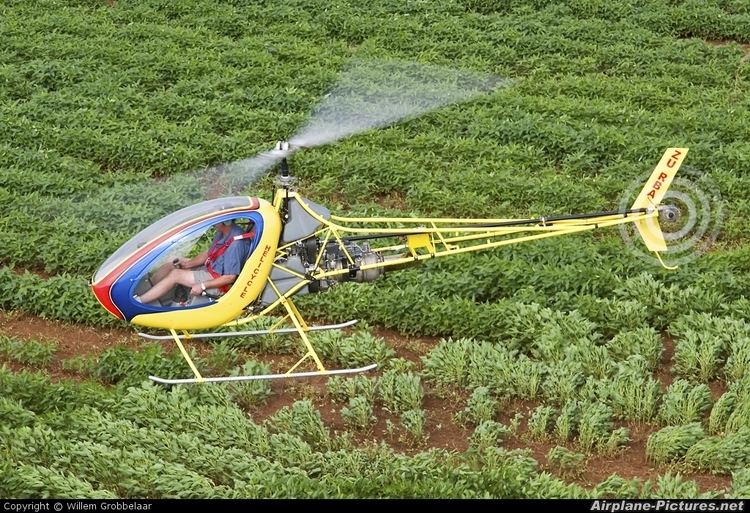
The Helicycle helicopter is the first experimental helicopter kit in mass-production to be powered by a turbine engine, the military surplus Solar T62-T32, capable of producing 150 shaft horsepower. The engine is limited to 95 horsepower due to torque limits on the main gearbox and rotor system.
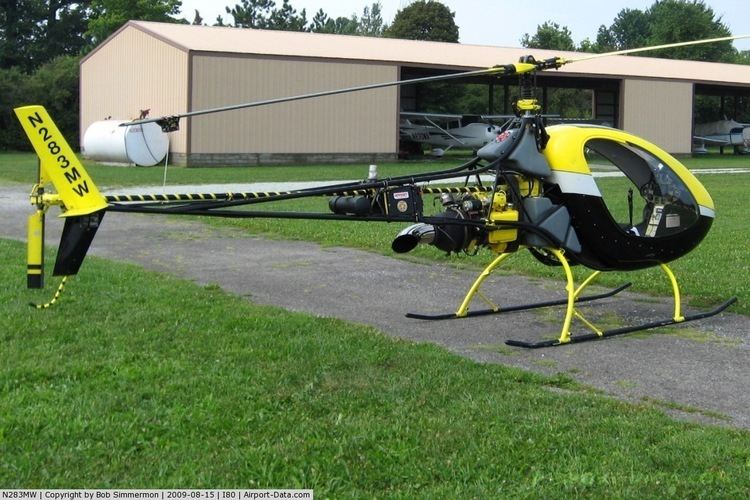
As of June 2010, five runs of about 30 kits each have been delivered to builders, for a total of 160 kits, of which more than 80 have been completed and are flying, with another kit being completed every other month, on average (delivery of a sixth run is scheduled to start in 2010). A unique feature of the kits is that a factory checkout must be completed by a factory-designated airframe and power plant (A&P) technician and test pilot before the builder is allowed to fly the aircraft. The factory withholds a few critical components needed for flight, such as the main rotor bearings, which the factory representative brings to the checkout. In order to ensure that prospective pilots have the necessary flight skills, builders must have at least a solo endorsement from a certified flight instructor (CFI) for flying a commercially-built Robinson R22 helicopter.
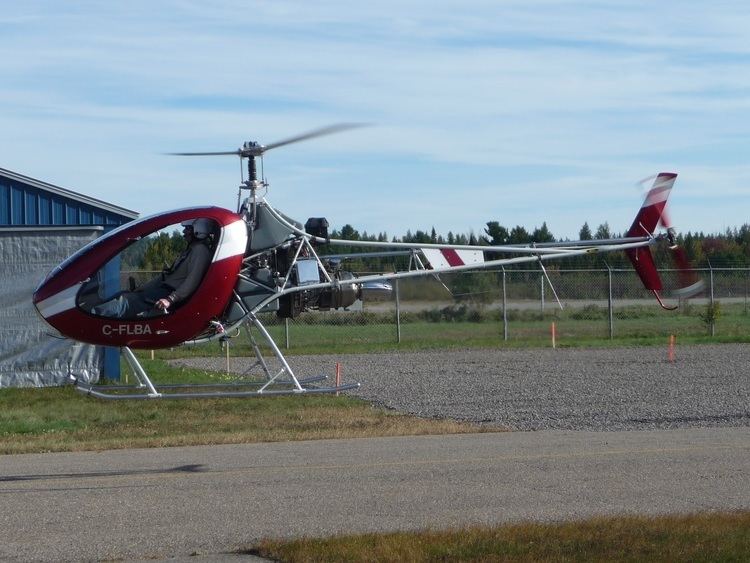
The total number of hours accumulated on all Helicycles flying is estimated to be well in excess of 3,000 flight hours, with three fatal accidents, the latest occurring on 28 September 2014 in rural Sumner county, Tennessee. There have been several accidents and incidents where Helicycles have lost power in/near hover, resulting in minor damage to the skids and some airframes, but no serious injuries. Most of these were attributed to a radio-frequency interference (RFI) problem with the electronic governor, and the issue was reportedly solved with better shielding in 2005. At least one accident may have been caused by a crack in a fuel line due to lack of mechanical support between a manifold and a fuel injection port. Another accident involved flight into high-voltage power distribution wires, but the aircraft was able to fly again, following repairs, and the pilot was not seriously injured. The NTSB report on the fatal accident indicates extensive damage to the helicopter due to impact with a body of water. An examination of the anti-torque pedal assembly by the NTSB Materials Laboratory revealed that the fracture surface patterns found on it were consistent with a bending overstress separation. It could not be determined whether the overstress condition was the result of a precrash or postcrash event. According to the probable cause report, N3275Q suffered "inflight collision with terrain/water", and "reason for occurrence undetermined - Pilot In Command".
Design
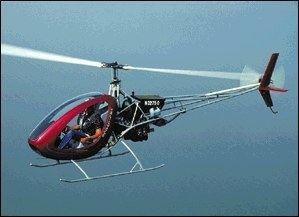
Specific design features include a fully harmonized rotor, a modulated collective pitch system, very low twice-per-revolution vibration level due to elastomeric thrust bearings, a sufficient flapping angle for low-"G" maneuvers and slope landings, control friction devices, and an electronic throttle control (governor).
The feel of the controls in the Helicycle is modeled after that of the Robinson R22, such that quick stops and autorotations are performed similarly in both aircraft, reportedly allowing new pilots to transition to flying their kits with minimal adjustments.
Maintenance
Maintenance primarily consists of visual inspection of all structural components, wiring, and moving parts outside the powerplant, and lubrication of bearings every 100 hours of operation. The time between overhauls (TBO) of the aircraft is estimated to be 1,500-2,000 hours. The track record of the Solar T-62 gas turbine power plant in military applications (Sikorsky CH-53E Super Stallion and Boeing CH-47 Chinook auxiliary power units) is reported to be excellent — so much so, that the maintenance schedule essentially consists of inspection of the powerplant interior at 1,000 hours and overhaul of the powerplant when wear is measured beyond established tolerances.
Specifications (Helicycle)
Data from Eagle R&D
General characteristics
Performance
